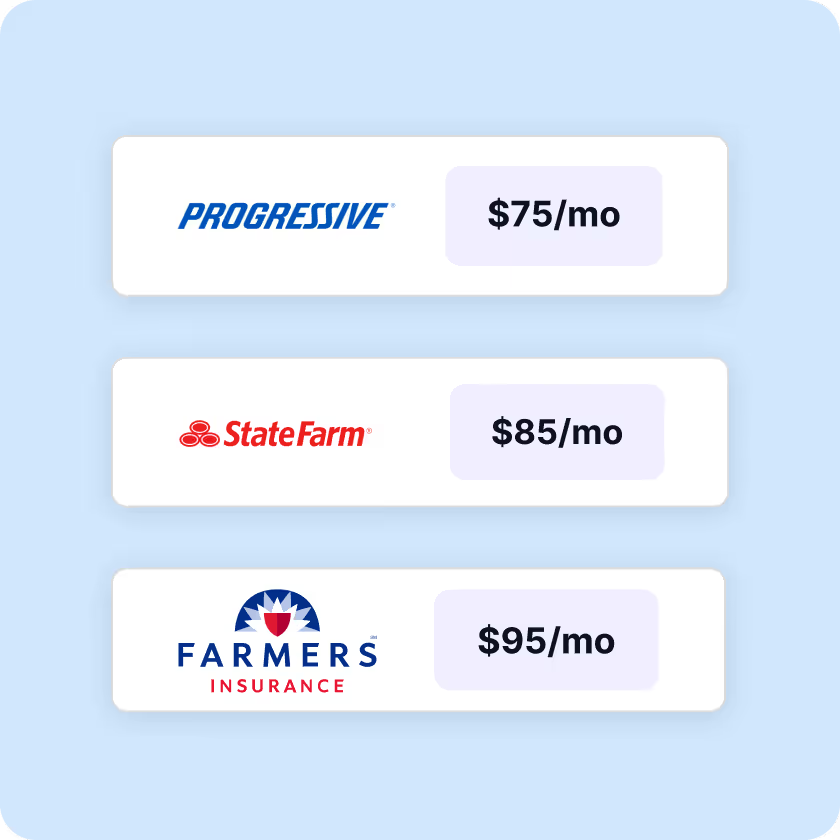
Kudos has partnered with CardRatings and Red Ventures for our coverage of credit card products. Kudos, CardRatings, and Red Ventures may receive a commission from card issuers. Kudos may receive commission from card issuers. Some of the card offers that appear on Kudos are from advertisers and may impact how and where card products appear on the site. Kudos tries to include as many card companies and offers as we are aware of, including offers from issuers that don't pay us, but we may not cover all card companies or all available card offers. You don't have to use our links, but we're grateful when you do!
Credit Card Pairing Strategy: Best 2-Card, 3-Card, and 4-Card Combinations for Maximum Rewards
July 1, 2025

.webp)
Why Most People Leave Money on the Table With One Card
Using a single credit card for all your purchases is like bringing a butter knife to a Swiss Army knife fight. You're equipped, but you're not optimized.
The average American household leaves between $800 and $1,200 in rewards on the table annually by using just one credit card. Why? Because no single card excels at everything. One might offer 4% on dining but only 1% on groceries. Another crushes gas station purchases but falls flat on travel.
The solution isn't collecting dozens of cards—it's strategic pairing. By carefully combining 2-4 complementary credit cards, you can maximize rewards across every spending category without the complexity of managing ten different accounts.
This guide breaks down exactly how to build your perfect card combination, whether you're starting with your first pairing or optimizing an existing wallet.
The Progressive Approach: Start Small, Scale Smart
The beauty of credit card pairing is that you don't need to apply for multiple cards at once. Start with a strong two-card foundation, then add strategic cards as your spending patterns and credit profile evolve.
The 2-Card Foundation: Cover the Essentials
A solid two-card strategy should accomplish three goals: capture high rewards on your biggest spending categories, earn strong baseline rewards on everything else, and keep annual fees manageable.
The Classic Combo: Premium Travel Card + No-Fee Everyday Card
This pairing works for 70% of credit card users because it balances reward potential with simplicity. Your premium card (typically $95-$250 annual fee) handles dining, travel, and select bonus categories where you spend heavily. Your no-fee card captures 1.5-2% on everything else—groceries, utilities, online shopping, and miscellaneous purchases.
The math is compelling. Let's say you spend $1,500 monthly on dining and travel, plus $2,500 on everything else. With a premium card earning 3x points on dining/travel and a flat-rate 2% card for other spending, you'd earn approximately 54,000 points annually (assuming 1 cent per point value). Compare that to using a single 2% card for everything, which would yield only 48,000 points—a 12.5% difference.
Popular combinations include the Chase Sapphire Preferred® Card with Chase Freedom Unlimited®, or the Capital One Venture X Rewards Credit Card paired with Capital One SavorOne Rewards Credit Card. The key is choosing cards that share the same rewards currency, allowing you to pool points for maximum redemption value.
[[ CARD_LIST * {"ids": ["509","497", "2888", "18233"]} ]]
The Cash Back Power Duo
If you prefer cashback simplicity over travel points, pair a category bonus card with a strong flat-rate card. The Citi Custom Cash® Card earns 5% back on your top spending category each month (up to $500 in purchases), while the Citi Double Cash® Card delivers 2% on everything else.
[[ SINGLE_CARD * {"id": "2885", "isExpanded": "false", "bestForCategoryId": "15", "bestForText": "Cash Back Seekers", "headerHint": "Flexible Cash Back Card"} ]]
[[ SINGLE_CARD * {"id": "580", "isExpanded": "false", "bestForCategoryId": "15", "bestForText": "Everyday Spenders", "headerHint": "No Annual Fee"} ]]
This strategy requires zero mental overhead—just use the right card for your top category and default to the flat-rate option for everything else. For a household spending $500 monthly in their top category and $3,000 in other purchases, you'd earn $960 annually—$180 more than using a single 2% card.
The 3-Card Strategy: Fill the Gaps
Once you've mastered a two-card rotation, adding a third card can capture additional high-value categories or unlock premium perks worth more than the annual fee.
The Classic Trifecta Approach
Credit card enthusiasts often reference "trifectas"—three-card combinations from a single issuer that maximize rewards across all spending. The most popular is the Chase trifecta: Chase Sapphire Reserve® (4x dining/travel), Chase Freedom Flex® (5x rotating categories), and Chase Freedom Unlimited® (1.5x everything else).
[[ SINGLE_CARD * {"id": "510", "isExpanded": "false", "bestForCategoryId": "15", "bestForText": "Frequent Travelers", "headerHint": "$300 Annual Travel Credit"} ]]
[[ SINGLE_CARD * {"id": "2883", "isExpanded": "true", "bestForCategoryId": "52", "bestForText": "No-Fee Card Seekers", "headerHint" : "No Annual Fee" } ]]
[[ SINGLE_CARD * {"id": "497", "isExpanded": "false", "bestForCategoryId": "15", "bestForText": "Cash Back Seekers", "headerHint": "Fantastic Cash Back Card"} ]]
This combination ensures you never earn less than 1.5x points on any purchase, while capturing 4-5x on the categories where you spend most. Annual fees total $550 for the Reserve-based version, but the card's $300 travel credit, Priority Pass lounge access, and enhanced redemption value often justify the cost for frequent travelers.
Alternatively, the Amex trifecta works well for foodies and premium travelers willing to pay $1,220 in combined annual fees for extensive statement credits, elite status perks, and 4x earnings on dining and groceries.
The Flexible Three-Card Portfolio
You don't need to stick with one issuer. Many savvy users build cross-issuer combinations that maximize flexibility. Consider pairing the Capital One Venture X (2x everything, $300 travel credit) with the American Express® Gold Card (See Rates & Fees) (4x dining and groceries) and a rotating category card like the Discover It Cash Back Credit Card (5% quarterly categories).
[[ SINGLE_CARD * {"id": "118", "isExpanded": "false", "bestForCategoryId": "15", "bestForText": "Frequent Travelers", "headerHint": "Generous Travel Rewards"} ]]
[[ SINGLE_CARD * {"id": "821", "isExpanded": "false", "bestForCategoryId": "15", "bestForText": "Cash Back Seekers", "headerHint": "0 Annual Fee"} ]]
This setup covers premium travel perks, outsized dining and grocery rewards, and quarterly category bonuses—all while maintaining separate points currencies that can be used independently or converted as needed.
The 4-Card Portfolio: Complete Category Coverage
Adding a fourth card makes sense when you have specific spending categories that justify dedicated coverage, such as gas, streaming services, or business expenses.
The Business Owner's Quad
If you operate a business or side hustle, consider Chase Sapphire Reserve (personal travel/dining), Chase Freedom Unlimited (personal everyday), Ink Business Preferred® Credit Card (business travel/advertising/shipping), and Ink Business Cash® Credit Card (business office/phone/gas).
[[ SINGLE_CARD * {"id": "1100", "isExpanded": "true", "bestForCategoryId": "52", "bestForText": "Business Owners", "headerHint" : "Valuable Rewards" } ]]
[[ SINGLE_CARD * {"id": "1099", "isExpanded": "true", "bestForCategoryId": "52", "bestForText": "Small Business Owners", "headerHint" : "Maximize Cash Back" } ]]
This combination captures maximum rewards on both personal and business spending while keeping everything within the Chase Ultimate Rewards ecosystem for easy point pooling. The Ink Business Preferred's 3x earnings on internet, cable, and phone services alone can generate substantial points for many small business owners.
The Maximalist Approach
For households with diverse spending across many categories, a four-card portfolio might include: a premium travel card for flights and hotels, a dining and grocery specialist, a rotating category card, and a flat-rate card for gaps.
One effective combination: American Express Platinum Card® (See Rates & Fees) (5x flights), Amex Gold (4x dining/groceries), Chase Freedom Flex (5x rotating categories), and Capital One Venture (2x everything else). Yes, this spans multiple issuers and requires tracking different points currencies, but for high spenders, the additional complexity delivers hundreds of dollars in extra rewards annually.
Choosing Your Perfect Pairing: The Strategic Framework
Building your optimal credit card combination requires honest assessment of your spending patterns and financial habits. Here's how to choose wisely.
Analyze Your Spending Categories
Review three months of credit card statements and categorize every purchase. Most people discover they spend far more in unexpected categories than they realize. Your gut might say "I barely spend on groceries," but the data might show $600 monthly at supermarkets.
Focus on your top three to five categories representing the bulk of your spending. These are your targets for bonus category cards.
Calculate the Annual Fee Breakeven
Premium cards with annual fees only make sense if the rewards and benefits exceed the cost. Calculate your breakeven point for each card.
For example, if a card charges $95 annually and offers 3x points on dining versus 1x on your current card, you need to spend $4,750 on dining annually (assuming 1 cent per point value) just to break even. Add in any statement credits, and this threshold often drops significantly.
Consider the 5/24 Rule and Application Timing
Chase applies a "5/24 rule"—if you've opened five or more credit cards (from any issuer) in the past 24 months, you'll likely be denied for Chase cards. If you plan to include Chase cards in your strategy, apply for those first before opening cards from other issuers.
Space applications 2-3 months apart to minimize impact on your credit score and demonstrate responsible credit management to issuers.
Match Cards to Your Credit Profile
Premium cards typically require excellent credit (740+ FICO score). If you're building credit, start with no-annual-fee cards from the same issuer you eventually want to upgrade with, then add premium cards once your score improves.
Many issuers allow product changes, so you can start with a basic card and upgrade to a premium version later without a new hard inquiry.
Implementing Your Strategy: Tactical Tips
Set Up Your Wallet Hierarchy
Create a simple decision tree for which card to use. Tape a small cheat sheet inside your wallet if needed: "Dining/Travel = Card A, Groceries = Card B, Everything Else = Card C."
Most people establish the right-card habit within 2-3 weeks, after which it becomes automatic.
Automate Where Possible
Set recurring bills to the card with the most relevant bonus category. Streaming services go on your entertainment rewards card, phone bill on your utility rewards card, and so on. This guarantees you optimize about 30-40% of your spending without thinking about it.
Track and Optimize Quarterly
Spending patterns shift seasonally. Review your category spending quarterly and adjust your strategy if needed. Perhaps you're traveling more this quarter, justifying heavier use of your travel card, or the rotating category changed on your Freedom Flex, requiring a new approach.
Common Mistakes to Avoid
Spreading Too Thin
The biggest mistake is opening too many cards too quickly. More cards mean more annual fees, more statements to track, more due dates to remember, and more risk of missing a payment. Start with two cards, master that system, then expand only when you've proven you can manage it seamlessly.
Ignoring Annual Fees Without Calculating Value
An annual fee isn't inherently bad—it's only bad if you can't extract more value than you pay. Many users shy away from premium cards costing $250-$550 annually without calculating that statement credits, lounge access, and bonus rewards easily offset the fee for the right spender.
Forgetting to Redeem
Points lose value over time through program devaluations. Set a reminder every six months to review your points balances and plan redemptions. Don't hoard points indefinitely—they're meant to be used.
Carrying Balances
This should go without saying, but credit card rewards optimization only works if you pay your balance in full every month. Interest charges instantly negate any rewards earned. If you're carrying balances, focus on paying down debt before worrying about reward optimization.
Advanced Optimization Techniques
Pool Points Across Household Members
Many programs allow point transfers between household members. If you and your partner each have cards earning the same currency, you can combine points into one account for larger, more valuable redemptions like business class flights or luxury hotel stays.
Leverage Authorized User Cards
Adding authorized users (often free or low-cost) extends your bonus categories to your partner's spending. One partner might use the premium dining card for all restaurant purchases, even when the other partner is paying, maximizing the 3-4x bonus.
Time Applications for Welcome Bonuses
Welcome bonuses often represent 30-50% of first-year rewards value. If you're planning large purchases (home renovation, wedding expenses, business equipment), time your applications 2-3 months before the expense to ensure you can meet minimum spending requirements organically without manufactured spending.
Use Multiple Trifectas
Advanced users might maintain both a Chase trifecta for Ultimate Rewards and an Amex setup for Membership Rewards, giving access to different transfer partners and redemption options. This requires more management but maximizes flexibility for complex travel plans.
Making the Strategy Work Long-Term
The most successful credit card strategists treat their card portfolio like an investment portfolio—they review quarterly, rebalance when necessary, and aren't afraid to close cards that no longer serve their needs.
Set calendar reminders to review your setup every 3-4 months. Ask yourself: Are my spending patterns still aligned with my card benefits? Have any issuers introduced better cards I should consider? Am I actually using the benefits that justify annual fees?
If a card isn't pulling its weight, don't hesitate to downgrade to a no-fee version or close it entirely (assuming you're not hurting your credit utilization ratio).
The goal isn't to collect cards—it's to systematically capture maximum rewards on every dollar you already spend. With the right 2-4 card combination, you'll earn significantly more rewards while maintaining simplicity and organization.
Frequently Asked Questions
How many credit cards should I have for optimal rewards?
Most people achieve optimal rewards with 2-3 credit cards, while 4-5 cards represent the upper limit before complexity outweighs benefits. The right number depends on your spending diversity and organizational skills, but starting with two complementary cards covers 90% of spending categories for most households.
Should I choose cards from one issuer or mix issuers?
Same-issuer combinations simplify point pooling and redemption but limit your options. If you value simplicity and plan to transfer points to travel partners, stick with one issuer's ecosystem (Chase, Amex, or Citi). If you want maximum category coverage and don't mind tracking separate rewards programs, mixing issuers offers more flexibility.
How do I know when to add a third or fourth card?
Add another card when you identify a significant spending category—representing at least $300-500 monthly—that isn't well-covered by your current cards. Calculate whether the additional rewards (minus any annual fee) justify the complexity of managing another account. If the math shows $200+ annual benefit and you can handle the extra tracking, it makes sense to expand.
Will opening multiple cards hurt my credit score?
Each application triggers a hard inquiry that temporarily drops your score by 5-10 points, recovering within 3-6 months. However, the increased credit limit and positive payment history from multiple cards typically improves your score long-term. Space applications 2-3 months apart and avoid applying for too many cards at once.
What if I have bad credit—can I still do this?
Yes, but start with one secured or starter rewards card, use it responsibly for 6-12 months, then add a second card once your score improves. Focus on building credit first, optimizing rewards second. Many issuers offer product upgrades without hard inquiries once you've established good history.
Conclusion: Start Simple, Scale Strategically
Credit card pairing isn't about gaming the system or hoarding dozens of cards—it's about strategically using 2-4 complementary cards to capture significantly more rewards on spending you're already doing.
Start with a strong two-card foundation that covers your biggest spending categories. Master that combination for 3-6 months, then consider adding a third card if your spending justifies it. Most people never need more than 3-4 cards to optimize their rewards completely.
The difference between using one card and strategically pairing 2-3 cards can represent $500-1,500 in additional annual rewards. That's not life-changing money, but it's free travel, cash back for holiday shopping, or a cushion in your emergency fund—all for simply using the right card at the right time.
Ready to maximize your credit card rewards? Kudos takes the guesswork out of which card to use by automatically recommending your best option for every purchase. Install the Kudos browser extension to never leave rewards on the table again.
Unlock your extra benefits when you become a Kudos member

Turn your online shopping into even more rewards

Join over 400,000 members simplifying their finances

Editorial Disclosure: Opinions expressed here are those of Kudos alone, not those of any bank, credit card issuer, hotel, airline, or other entity. This content has not been reviewed, approved or otherwise endorsed by any of the entities included within the post.



















.webp)















.webp)








